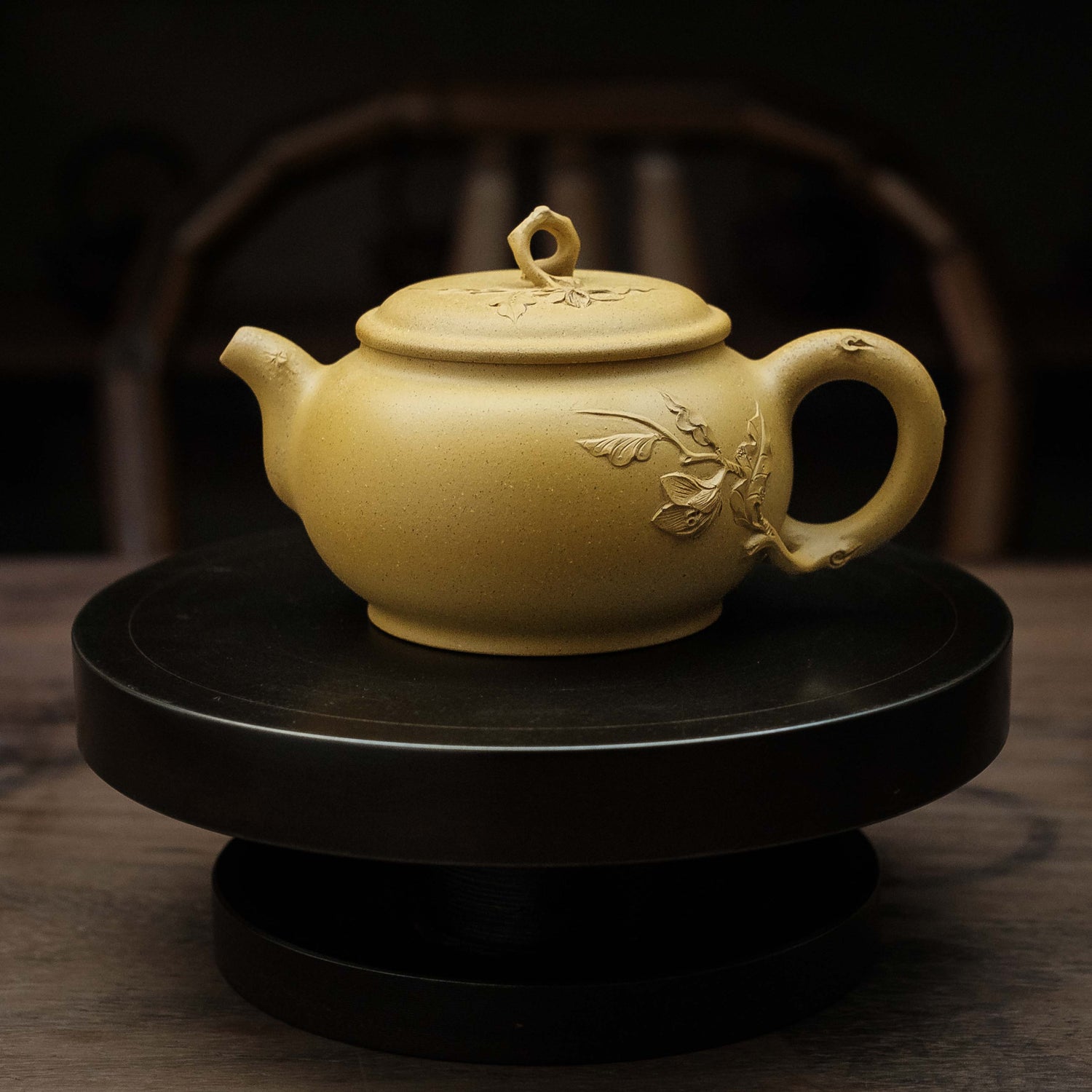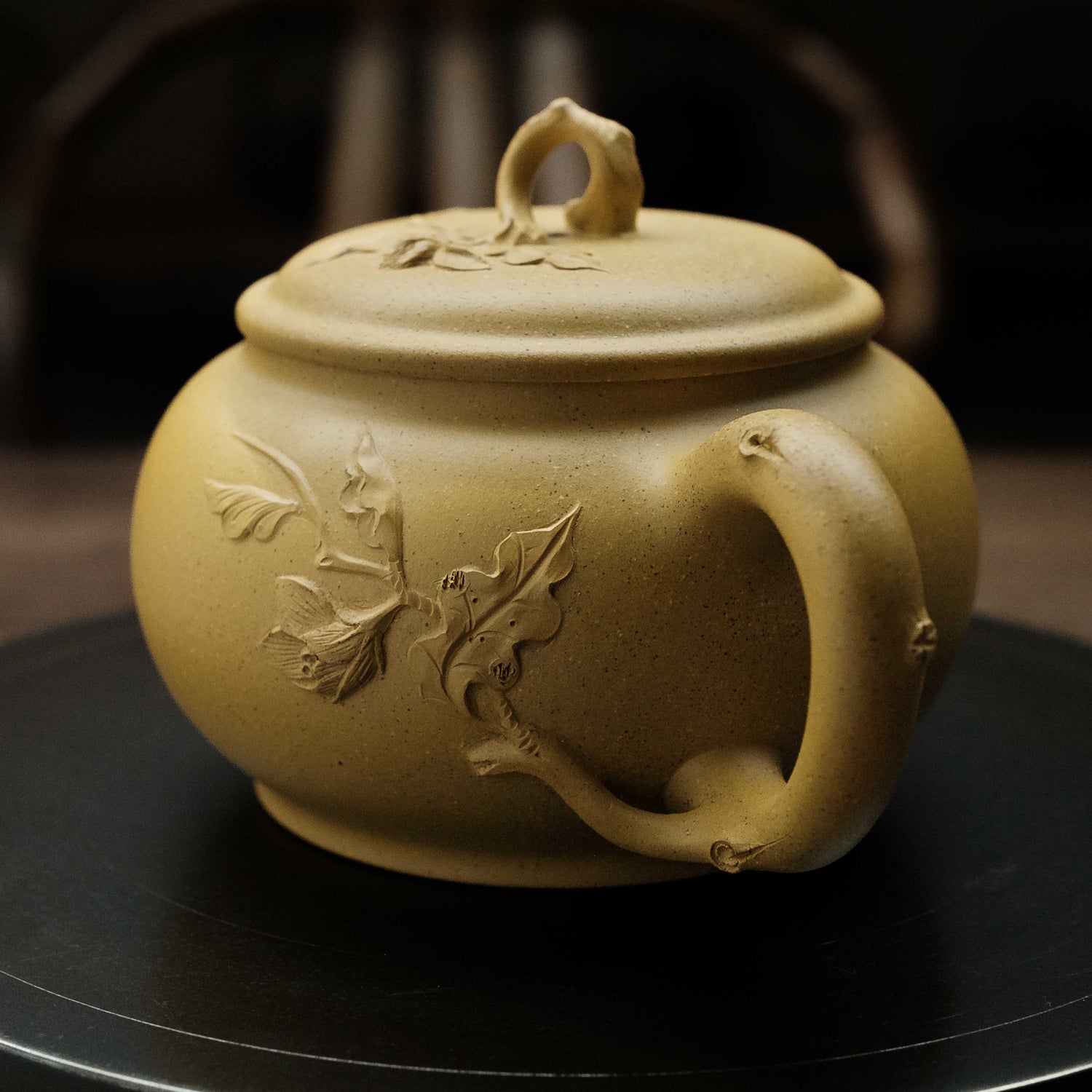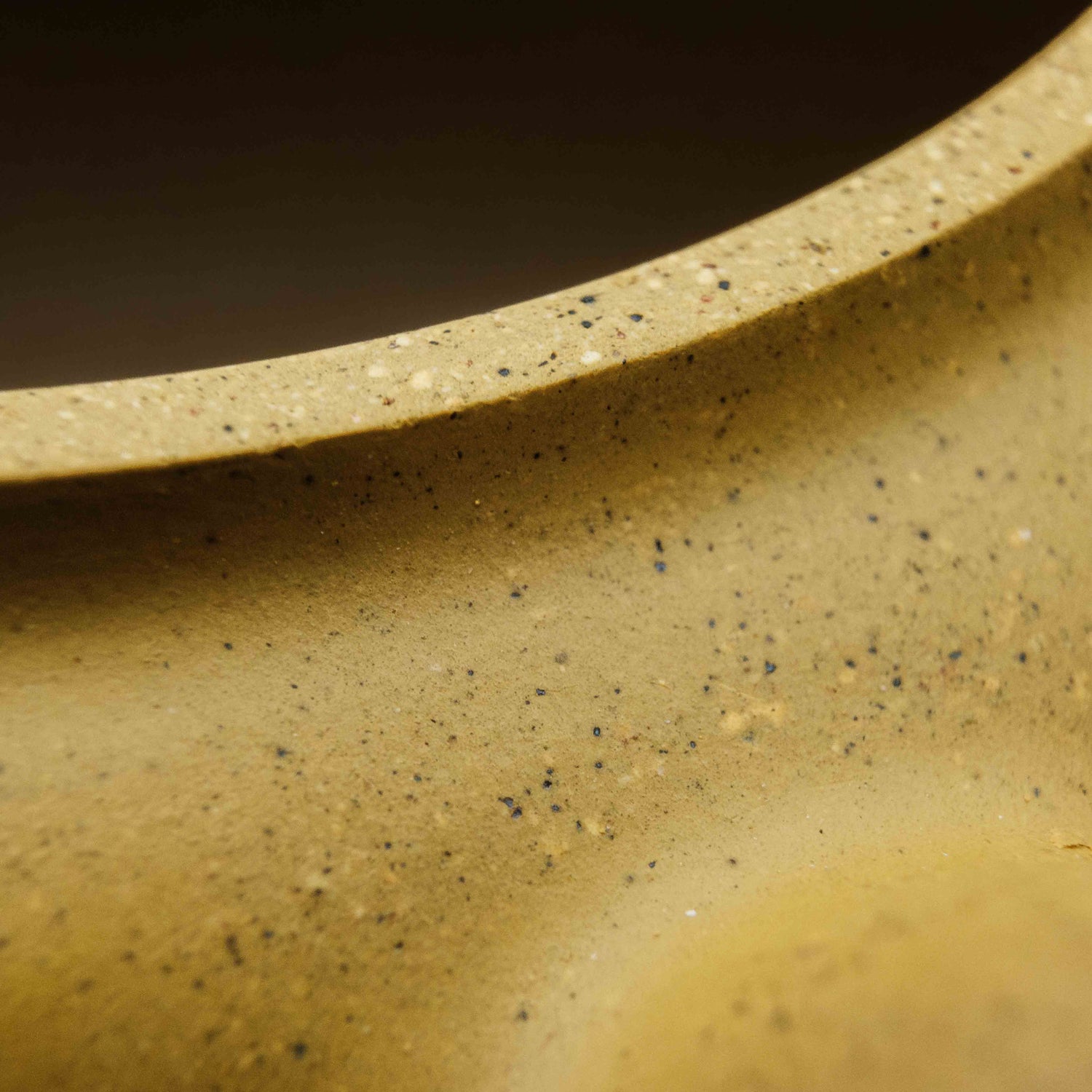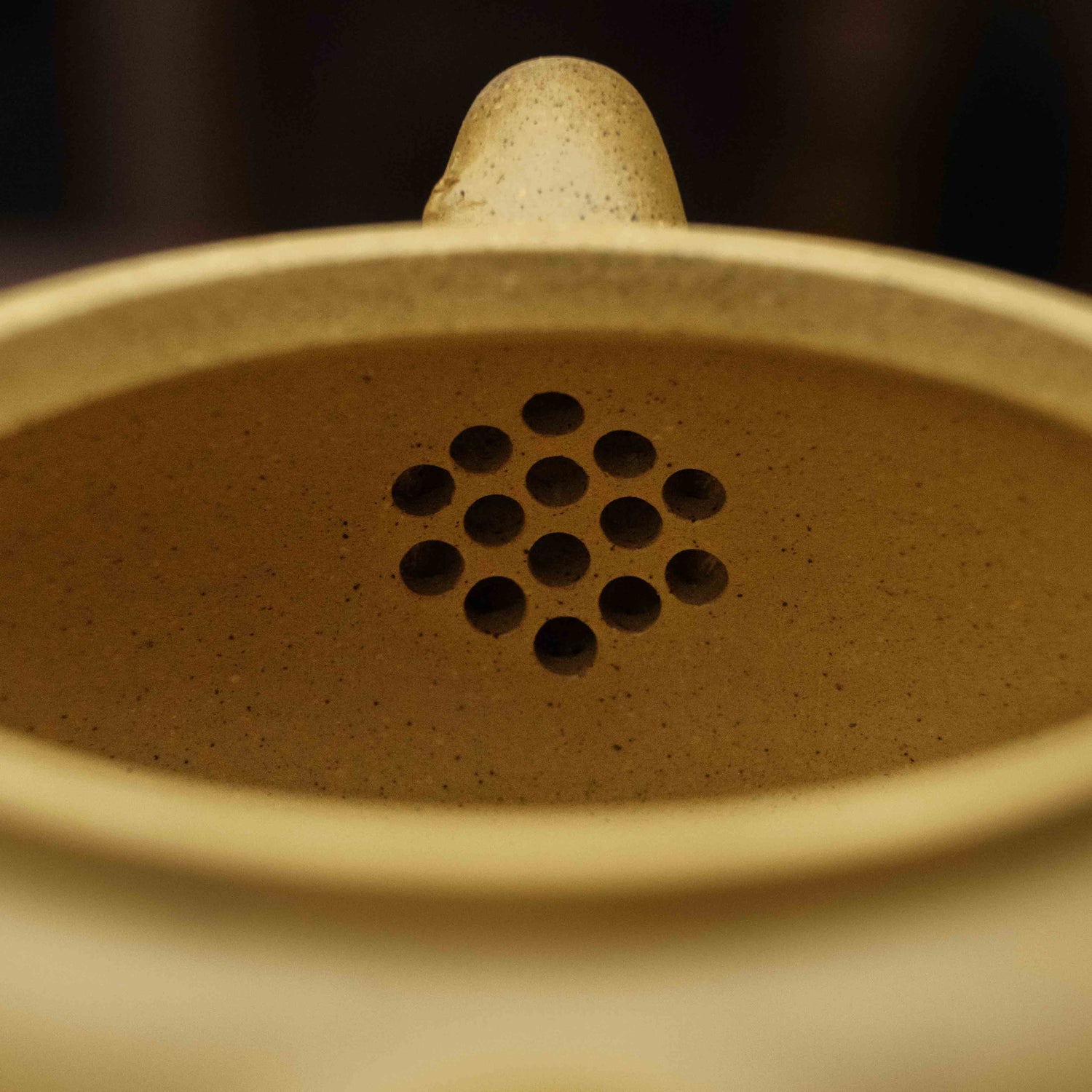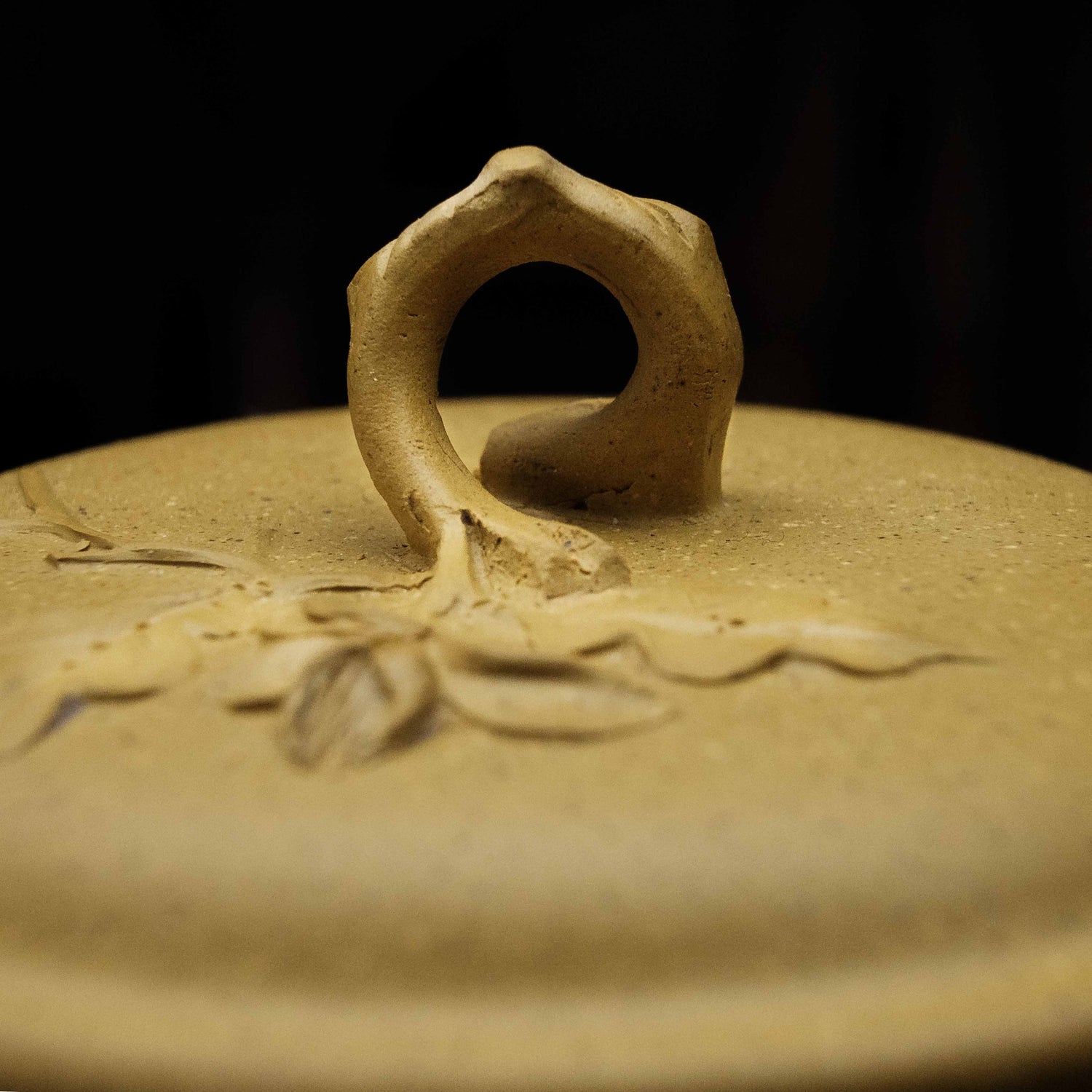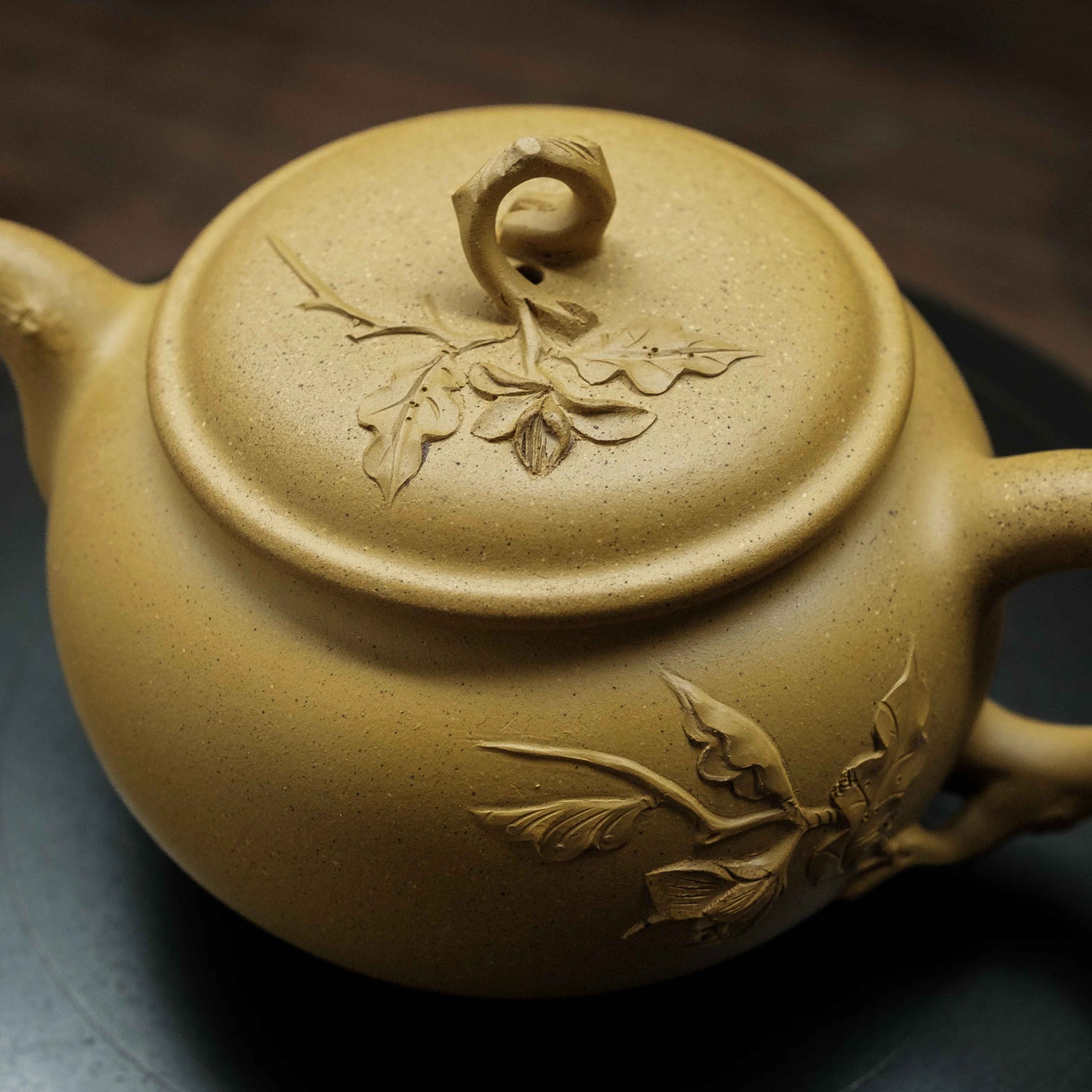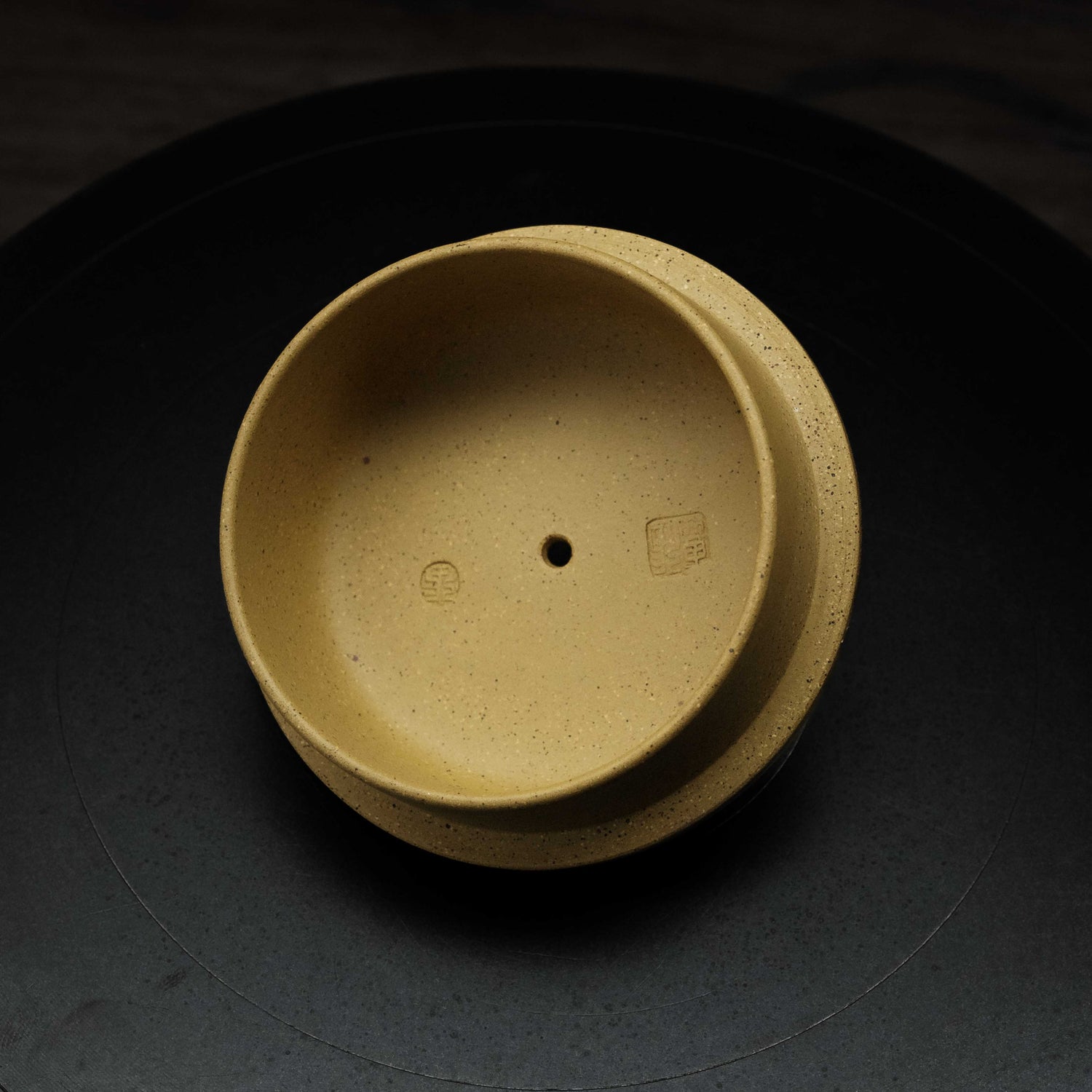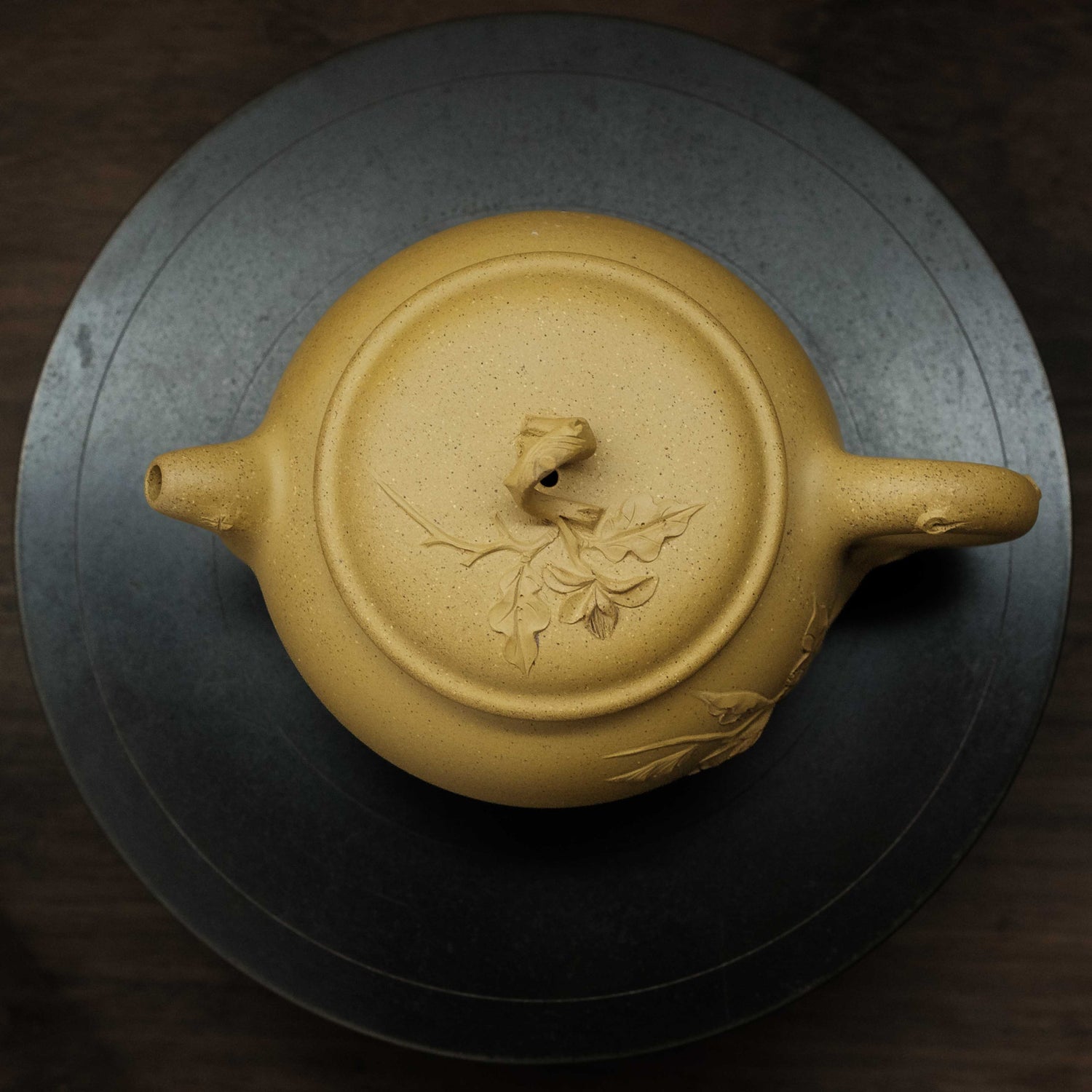







The Green Tea Goddess - Yixing Teapot Vintage Golden Duan Clay
- Regular price
-
£580.00 - Regular price
-
- Sale price
-
£580.00
Couldn't load pickup availability
綠茶仙子 黃金老段泥宜興紫砂壺 張惠
The Green Tea Goddess - Yixing Teapot Vintage Golden Duan Clay by Master Zhang Hui | Permanently collected by the Yunnan Provincial Museum
An Unusual Yixing Teapot Designed for Green Tea
Contrary to the belief that Yixing clay is best suited for black or fermented teas, Master Zhang Hui challenges convention. With expert knowledge and deep reverence for the living essence of wild, ancient tea, she created this teapot as a heartfelt tribute to her homeland—Guizhou—and its treasured offering: green tea.
Its cylindrical form—equal in width from mouth to base—encourages tender green tea leaves to rise, unfurl, and swirl freely, releasing their most delicate aromas and layered flavours. Combined with Zisha clay’s breathability and mineral richness, this unique design elevates each infusion, allowing the tea to evolve with every rebrew.
The multi-hole spout ensures a quick, clean pour—essential for preventing over-steeping and preserving the freshness and vitality of green tea, especially during intentional Gong Fu Cha brewing.
Inspired by Guizhou’s Wild, Ancient, and Indigenous Tea Trees
To bring this vision to life, Master Zhang returned to her home, Guizhou—a mist-veiled land of rich biodiversity, where wild, ancient, and indigenous tea trees have quietly flourished for thousands of years.
Unlike Yunnan's tall, towering arbour tea trees, Guizhou’s ancient tea trees grow low to the ground—bush-like, humble, and resilient. In the heart of the primaeval forest, Master Zhang studied their quiet strength and enduring spirit.
The finial of the teapot lid is sculpted in the likeness of an ancient tea tree root—slender yet strong—symbolising life that holds firm through time and all its challenges. From this root, sprouting leaves emerge, carrying the story of endurance, purity, and deep belonging to the earth.
The Rarity and Symbolism of Centuries-Old Huangjin Duan Clay
Equally significant is Master Zhang Hui’s intentional use of Huangjin Duan (Golden Duan) clay—a golden-hued Yixing clay sourced from Huanglongshan (Yellow Dragon Mountain), the ancestral origin of authentic Zisha. This revered mountain is now closed to mining to prevent overexploitation, making access to its original clay deposits extraordinarily rare. The clay used for this piece was mined over a century ago and aged through slow, traditional earth-cellar fermentation, enhancing the clay’s breathability and vitality over time. Among all Zisha types, Huangjin Duan is rarer still.
In Chinese culture, gold (黄金) symbolises what is lasting, noble, and worthy of reverence. As the saying goes: 真金不怕火炼 — “True gold does not fear the test of fire.” It is this spirit of endurance and quiet strength that Huangjin Duan carries.
Master Zhang chose this clay with great care to mirror wild tea trees' preciousness and living resilience. She reflects:
“The finest green teas emerge from spring’s first buds—delicate, precious, and full of life—having survived the long winter in the wilderness. Like gold, they deserve our deepest appreciation. And like the wild tea trees in our Guizhou mountains, they withstand the test of boiling water. Huangjin Duan embodies these same qualities.”
A Humble Masterpiece
Not only is the material rare, but it is also notoriously difficult to work with. Huangjin Duan clay, with its high mineral density and distinctive golden flecks, demands exceptional precision. Less malleable than other Zisha clays, it resists shaping and requires immense patience, deep familiarity, and steady hands to form and fire successfully.
The teapot’s sculptural intricacy speaks volumes of the mastery: the delicate tea buds, tender leaves, and root-shaped lid finial are all meticulously crafted from this demanding clay, using only small fragments and traditional hand tools. Each element took hours of highly focused labour—every curve, vein, and gesture was carefully shaped to embody the vitality of wild, ancient and indigenous tea trees in Guizhou.
Holding the teapot in your hands, you may feel as though the Tea Goddess herself is awakening—her spirit stirring through each leaf and root etched into the clay.
Genuine Yi Xing Teapot Offers:
• No chemicals & additives.
• Better breathability to enhance the flavours of your tea.
• Slow heat transferability, making it the best suitable teaware Gong Fu Cha style brewing.
• Prolonging aromas of the tea.
• The more you use it, the more lively and luminous it becomes.
• Antibacterial & rich in natural minerals that enhance, sweeten and balance the tea.
• A valuable collectable to be cherished for generations.
About the Artist
Master Zhang Hui 張惠
National Senior Arts & Crafts Artist · Traditional Craft Master · Inheritor of Yixing Zisha Pottery
Zhang Hui is a nationally recognised senior arts and crafts artist, a master of traditional Chinese craftsmanship, and a respected inheritor of the Yixing Zisha pottery tradition. She serves as a board member of the China Zisha Association, a member of the China Arts and Crafts Society, and an executive member of the China Zisha Appreciation and Collection Committee. Her works have won numerous awards and are held in the collections of museums across China.
Originally from Guizhou and born in the 1960s, Zhang Hui left her homeland in early 1987 and moved to Yixing—a place whose deep cultural roots and rich ceramic heritage immediately captivated her. Perhaps destined by affinity, she married Wu Xinyuan, a renowned collector and researcher of antique Zisha teapots from the very birthplace of the tradition, and together they embarked on a shared artistic journey.
Drawn to the timeless charm and natural elegance of antique Zisha teapots, Zhang Hui immersed herself in study and practice. In the 1990s, she formally entered the Yixing Zisha Craft Factory, where she learned under several esteemed masters. These formative years laid a strong foundation for her future in the field of Zisha artistry.
Zhang Hui has worked quietly and diligently for over thirty years, devoted herself to the clay with unwavering care and discipline. She holds exceptionally high standards for her materials, often working late into the night, shaping each teapot to strike a balance between form, function, and feel. Her rework studies of Ming and Qing-era teapots are so refined that experts can scarcely distinguish them from originals.
In recent years, her creative direction has undergone significant evolution. She believes that while tradition forms the root of any true craft, it must also speak to the present. Her newer works are characterised by an elegant balance of strength and grace—combining the gentle, flowing lines often seen in feminine forms with bold structural integrity and a deep sense of classical restraint.
Passionate about passing on Zisha's legacy, Master Zhang has opened her studio to students. Through her teaching and influence, over a hundred emerging artists now continue the tradition—each one a living echo of her commitment.
Cultural Tradition
1. Harmony Between Nature, Craft, and Spirit
In Chinese culture, tea is not merely a beverage but a practice of cultivating awareness, balance, and presence. The Yixing teapot aligns with this view, embodying 天人合一 (harmony between heaven and human) through its material, form, and use.
* Material from the earth: Zisha clay is drawn from the mineral-rich strata of Huanglongshan in Yixing, Jiangsu province—imbued with natural vitality and breathability.
* Craft shaped by human intention: Every pot is handmade, often by artists who view their work as a form of self-cultivation.
* Spirit revealed through tea: The pot comes alive only when used. Over time, the clay absorbs the essence of the tea, forming a unique bond between the user, the tea, and the pot.
2. Cultural Heritage and Resistance to Industrialisation
In modern times, the Yixing teapot is a cultural anchor against mass production and homogenisation. It upholds the values of:
* Slowness and intentionality
* Respect for nature and ancestry
* Craftsmanship over convenience
3. Artisan Legacy and Cultural Continuity
Yixing teapot pottery dates back to the Song Dynasty and flourished during the Ming and Qing dynasties, when loose-leaf tea became widely popular. Each pot reflects a lineage of regional skill, family techniques, and artistic expression passed down through generations.
* Signatures, seals, and forms tell stories of dynasties, masters, and aesthetic schools.
* The pot represents not mass production but a slow, intentional relationship with craft and earth.
4. A Living Object: The Pot That Remembers
Zisha clay is porous yet tight, allowing it to "breathe." With each brew, the pot develops a patina and begins to hold memory, retaining the fragrance and character of the tea. This makes each teapot a personal archive, deepening with time and use. It is said:
“壶养人,人养壶。”
“The pot nurtures the person, and the person nurtures the pot.”
What's Included
• Worldwide Shipping
• Shipping insurance
• 1 The Green Tea Goddess Golden Duan Clay Teapot
• Gift box
• 1 tea towel
• Certificate of Authenticity
• Priming & Seasoning support
Materials
Aged Golden Duan Clay From 1910s. Genuine Yellow Dragon Mountain Minerals.
Dimensions
Volume: approximately 190ml
Care & Tips
Given this teapot's high breathability, we recommend dedicating one teapot to a specific tea (or at the very least a type of tea) and pairing it with green tea, such as Long Jing, Mao Jian, Cui Ya, or any delicate tea bud or tea leaves.









The Green Tea Goddess - Yixing Teapot Vintage Golden Duan Clay
- Regular price
-
£580.00 - Regular price
-
- Sale price
-
£580.00


